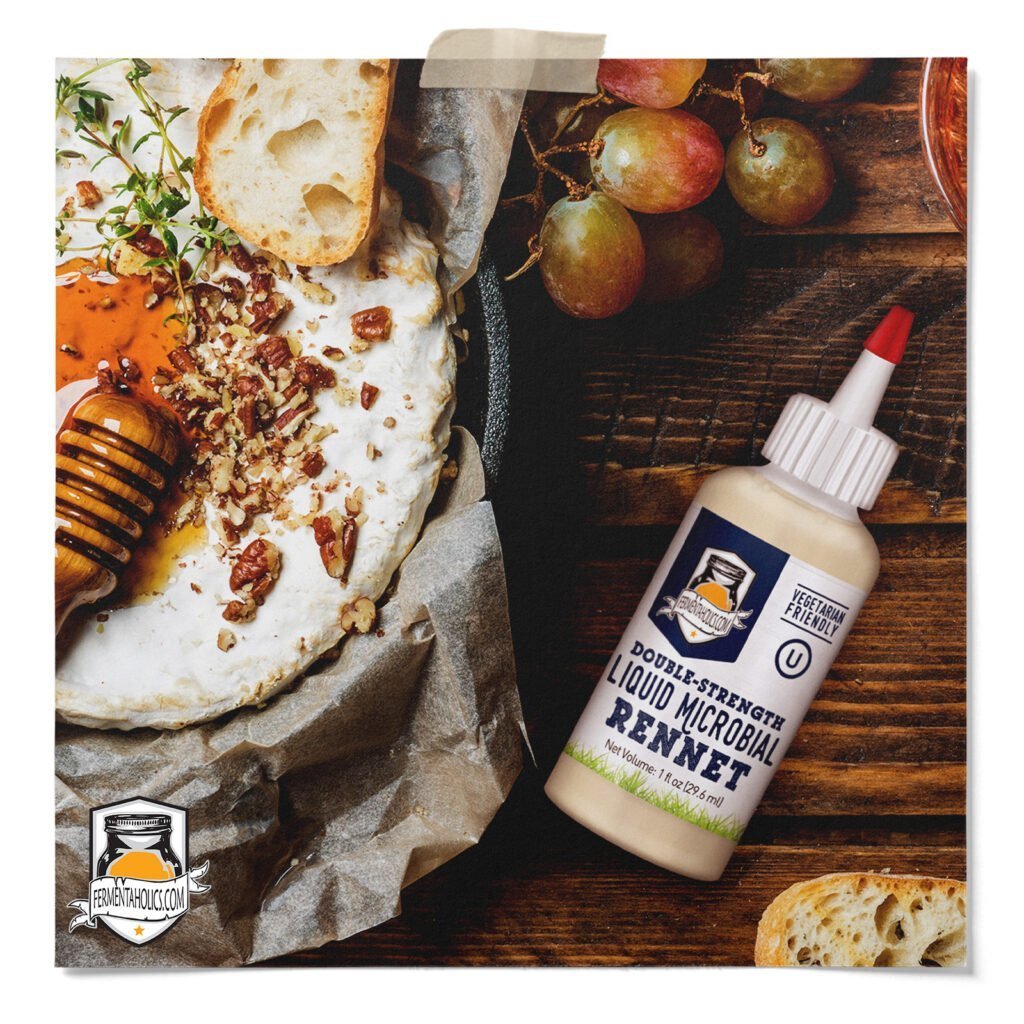

Rennet is an enzyme used to coagulate milk and turn it into cheese. There are four main types of rennet that cheesemakers can choose from- animal rennet, microbial rennet, plant rennet, and fermentation-based rennet. The two most popular types of rennet are microbial and animal rennet. Without rennet, there would be no coagulation; meaning milk would never curd into cheese.
Animal Rennet is obtained from the stomachs of unweaned baby calves, lambs, and goats. This rennet is naturally present within the stomach of these animals, it inherently turns the milk in their stomachs into a soft cheese to help with their digestion. Although animals are not killed for the making of this product, it is not considered vegetarian.
Microbial rennet is derived from the fungus Mucur Miehei and is a great vegetarian-friendly source of coagulant. Coagulation traps the fat particles and is what allows the liquid in milk to turn into cheese. The enzymes in microbial rennet work well to break down the protein bonds and separate the curd from the whey, getting maximum curd formation without the bitterness of some vegetable (plant) rennets.
Plant-based rennet is attained from cardoon thistle, artichokes, or nettles by being soaked in water to extract a similar enzyme to the other rennets. Plant-based rennet is not as popular as animal rennet because of the inconsistent result that it can yield during the cheese-making process. This rennet can also affect the flavor of the cheese by leaving a bitter taste after the cheese begins to age.
The last main type of rennet is fermentation-based rennet. This rennet uses genetic engineering to reproduce the same enzymes that you would find in animal and microbial rennet. This rennet is also considered to be vegetarian.
Whichever type of rennet you decide to use will play an important role in the cheese-making process and leave you with different flavors, textures, and types of cheese.
Liquid microbial rennet is usually preferred because it is easier to measure; however, microbial rennet tablets have a longer storage life. Liquid microbial rennet will last about 7-8 months when refrigerated, and microbial rennet tablets can last up to two years. One teaspoon of liquid rennet (about 20 drops) is equal to one tablet of rennet.
Every cheese you’ve ever met starts with the same basic ingredients: Milk + Acid + Heat + Enzymes + Salt. Some cheeses stop right there, which we call Fresh Cheese. Jumping into more complex flavors and textures, like soft, aged cheese and hard cheese, requires manipulation of temperature, moisture content & fermentation.
The First Step of all cheesemaking is breaking the milk into curds and whey. This “breaking” is a chemical process. While milk proteins typically repel one another, when the pH is lowered, an enzyme is added, or the temperature raised, the proteins begin to suddenly attract one other and clump together in what we see as curdles. The liquid that the proteins leave behind is whey. To learn more about these cheese basics, check out our Easin’ Into Cheesin’ Booklet and Fresh Cheese Making Kit.
Cheese is a staple to just about any household, and can easily be incorporated into any meal. The creaminess, flavor, and richness of cheese are some of the most satisfying parts of a meal. Discovered in ancient times by accident, farmers left milk sitting in the sun for hours, when they rediscovered it and drained the liquid- they realized the leftover curds had a surprisingly good taste. In today’s world, there are estimated over 1,800 different types of cheese. Discover your favorite type of cheese by checking out cheese recipes on our blog.
Microbial Rennet is used to separate the milk into curds and is used during the process of creating cheese. Some of the most popular types of cheese that require the use of rennet are parmesan, gorgonzola, gruyere, burrata, and Manchego cheese.
